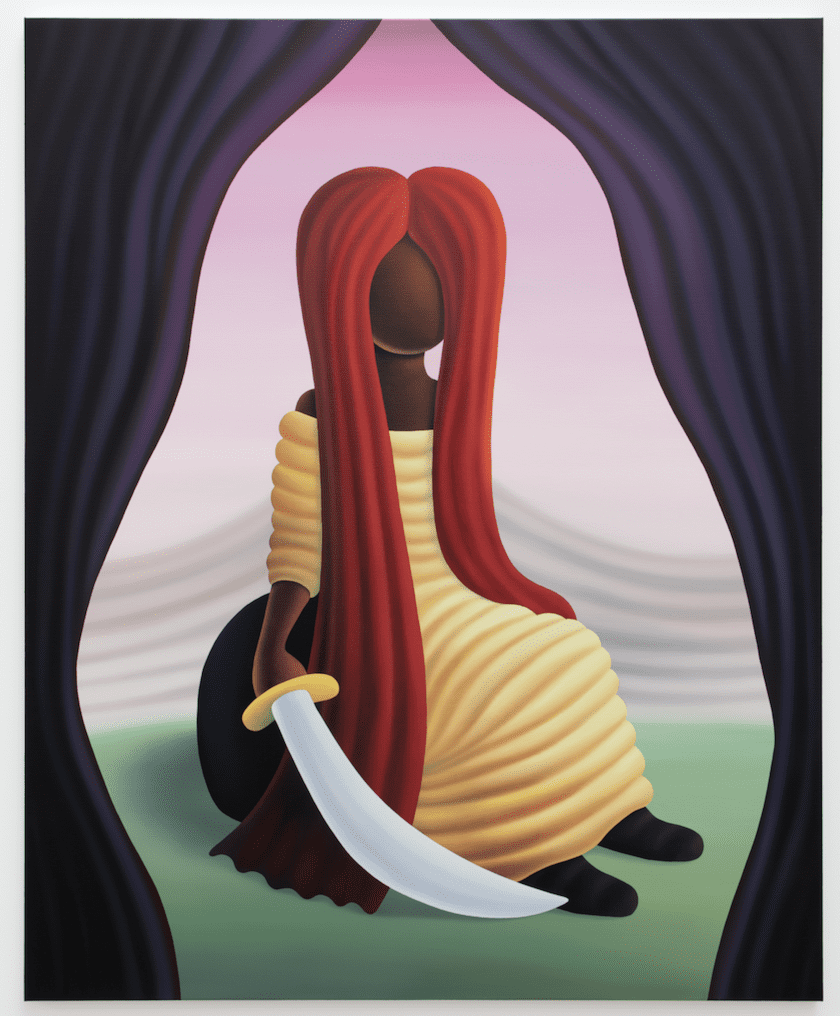Jordi Ribes (b.1972, Barcelona, Spain) is an artist based in Barcelona. His work is known for blurring the lines between digital and pictorial expression. He achieves this ambiguity through his unconventional use of oil paint, which – devoid of its usual malleability – gives a polished and indistinct effect, combined with the adoption of electric and artificial colors. The effect serves to feed into the narrative of a fantasy world. This universe features figures that are full of reference points, which give rise to a game of contrasts between the naïve and the perverse, the familiar and the unknown, the real and the fictitious.
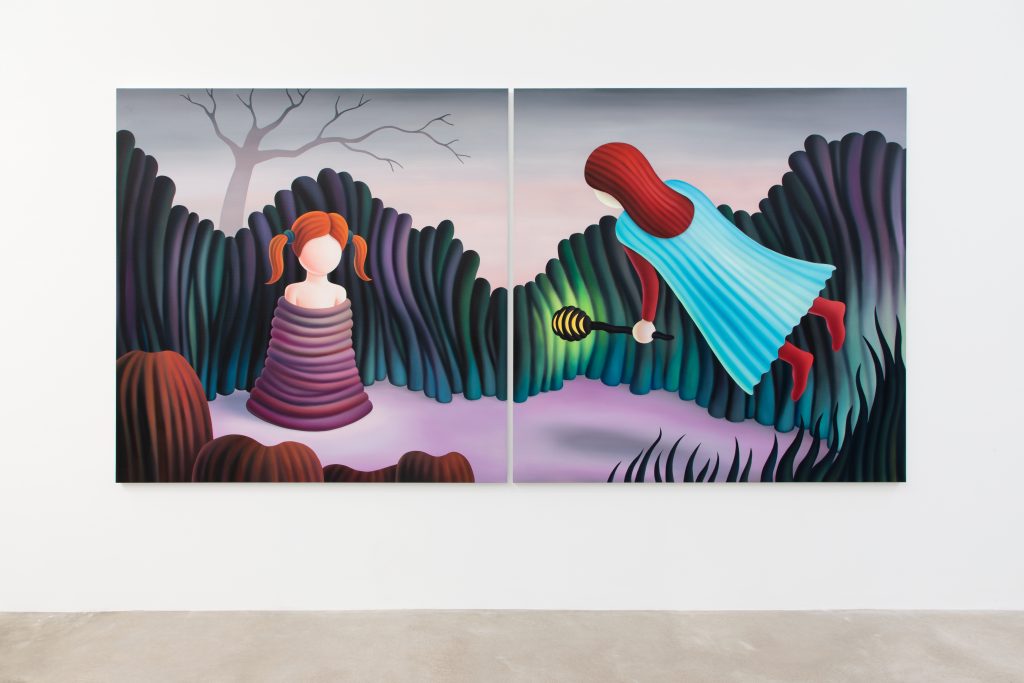
Tell us a little bit about yourself. Where are you from originally and when did art first enter your life?
I was born in Barcelona, although I’ve been living in Madrid for a few years, I currently work in Barcelona. My interest in art came while I was trying to study graphic design, specifically when I saw a slide of a painting by Turner, an almost abstract image of a storm at sea. That’s when I realised that I had to reconsider my professional career. After that I started studying Fine Arts.
Has your work always taken on the style it currently embodies?
My first paintings were tentative works, where my artistic references of the moment were more visible: abstract expressionism, the painting of the eighties… Then, for a while I stopped painting to make installations and videos, and then I returned to painting with more clarity, and then the current style emerged.
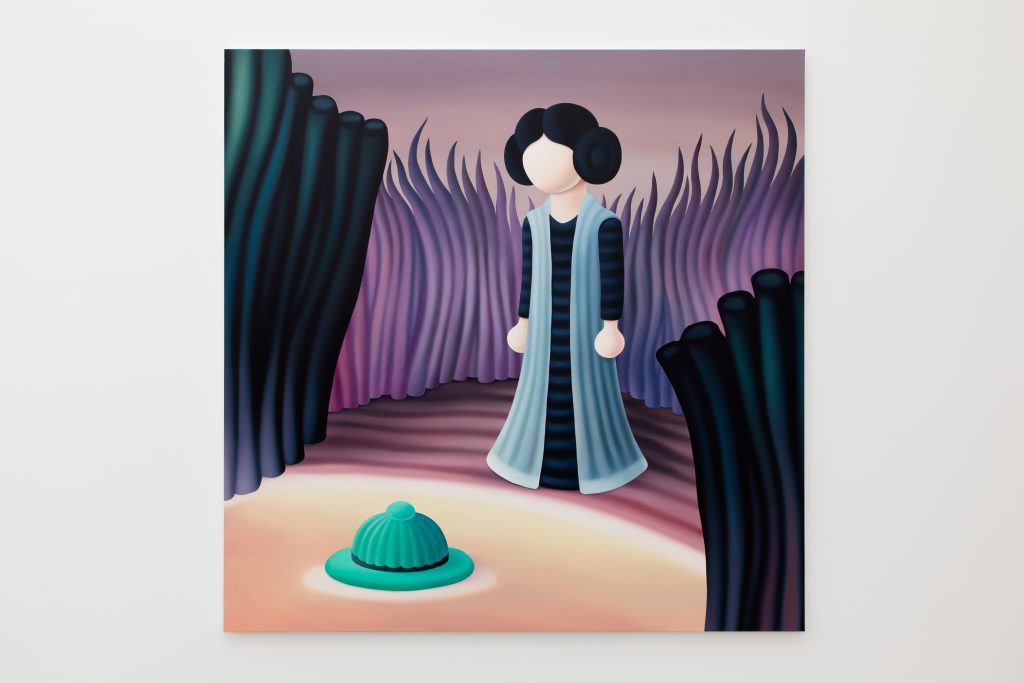
What’s a day in the studio like for you?
It’s quite normal. I spend more or less the whole day there. I’m accompanied by music or the radio and I usually have lunch in the studio.
What’s next for you?
Now I am preparing an exhibition for my gallery, L21 gallery, which is going to open a new venue in Barcelona. They comprise a series of eight paintings. The canvases alternate paintings with and without characters, united by the same landscape and the same horizon line.
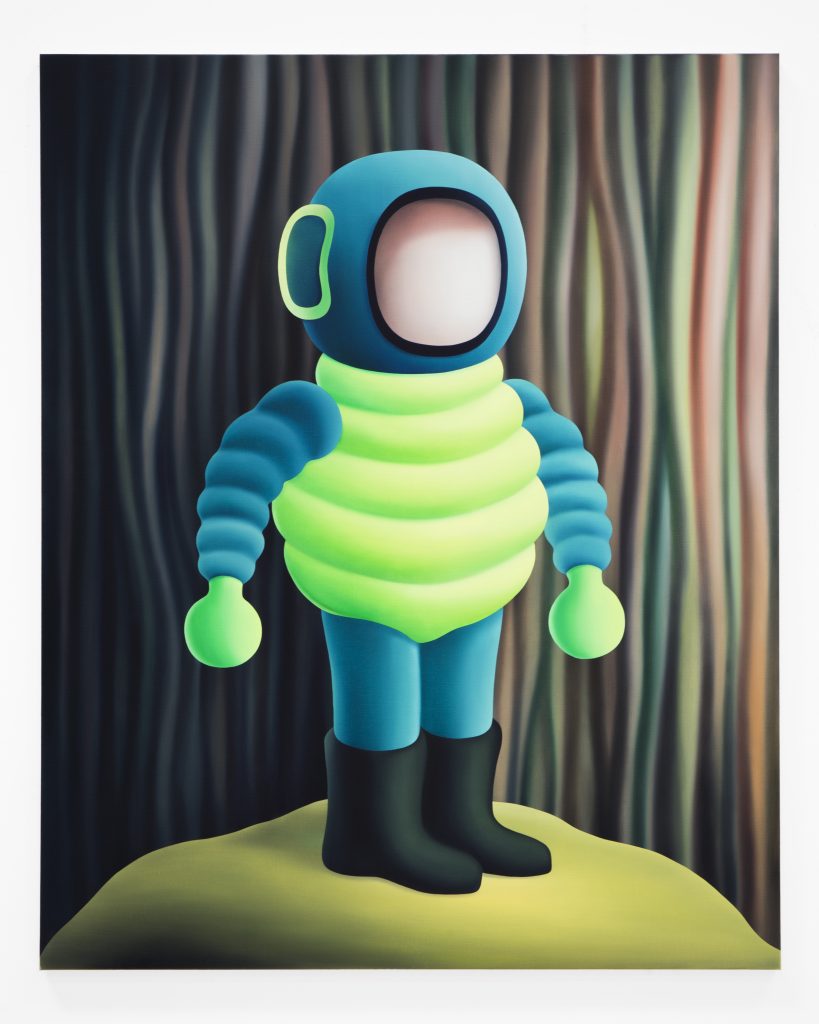
From where do you draw inspiration?
Inspiration comes when I start working. I take the computer and start to compose, to experiment, I start to review previous works, I search for things in google… and if all else fails I just start to draw.
Have you always painted in the style your work currently inhabits?
At the beginning my painting was more gestural and more abstract, because I wasn’t interested in realistic painting. But over time I became interested in constructing something more figurative, because different aspects can appear from the figure, such as narration, for example. So little by little I found out how I could construct a figuration that made sense and was credible. The result was a figuration constructed from gradients that looked more like a digital image than an oil painting.
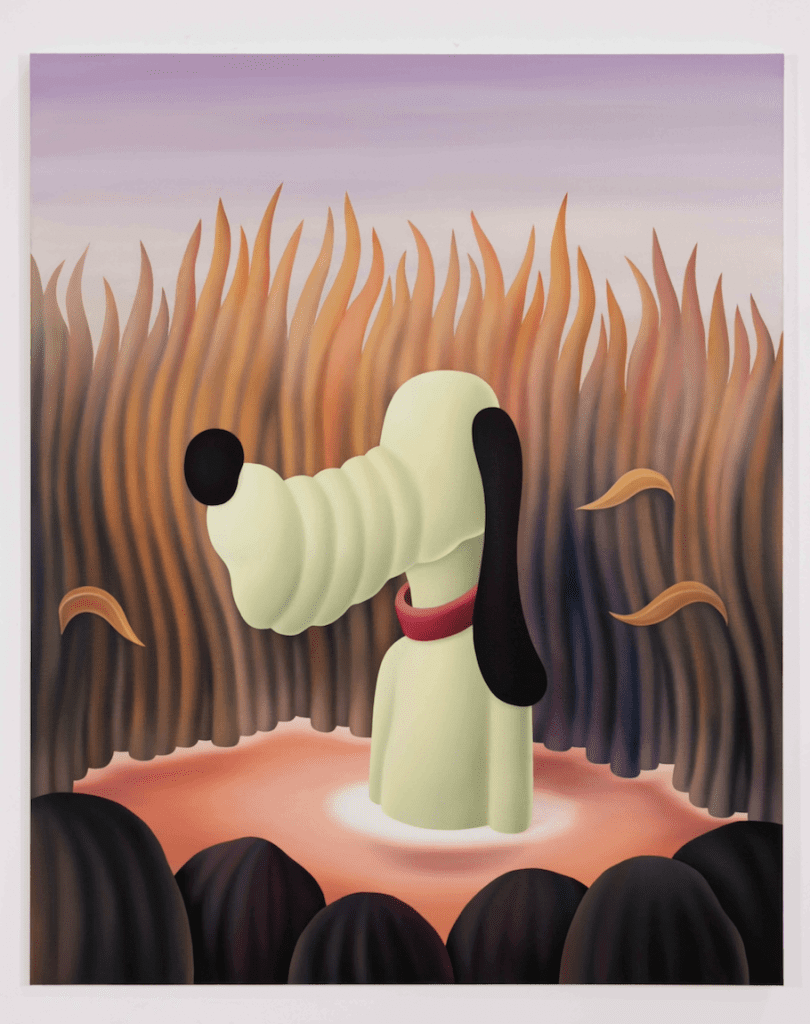
What source material do you base your work off of?
The world of cinema, science fiction, children’s stories or the world of art itself can be sources of inspiration mixed with more personal motifs.
Does your work reference any Art Historical movements?
Yes, especially painters from different periods. From classical painting where I appreciate their compositional taste and the air of religiousness that their works exude. But sometimes I can also use references or characters from the avant-garde or more contemporary painters.

What is your process like? How do you begin a work?
Because of the digital look and feel of my work I usually sketch my paintings from a computer program. I can either start from scratch or use previously made paintings that I break down and build them up again on the computer. When I’m stuck for ideas, pencil and paper can also be a good solution.
At the end of every interview, we like to ask the artist to recommend a friend whose work you love for us to interview next. Who would you suggest?
Momu & No Es. They are an artistic couple who move between Madrid and Rotterdam. Their work ranges from installation, video, performance and drawing.
